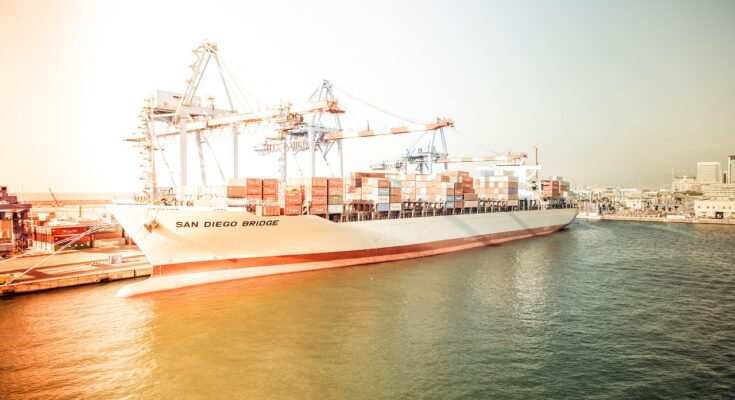California, known for its diverse economy and vast landscape, plays a pivotal role in international trade through its bustling ports. The import and export of cargo in the Golden State are not only essential to its economic growth but also contribute significantly to global commerce. In this blog, we will delve into eight intriguing facts that shed light on the dynamic world of cargo import and export in California, unveiling the state’s immense impact on the global stage.
The Busiest Ports in the United States
California houses some of the busiest ports in the United States, serving as major gateways for international trade. The Port of Los Angeles and the Port of Long Beach, both located in Southern California, consistently rank among the top container ports globally. Together, they handle millions of twenty-foot equivalent units (TEUs) of cargo annually, facilitating the exchange of goods between the United States and the world. These bustling ports not only support the state’s economy but also act as crucial links in the global supply chain, making California an indispensable player in the ever-expanding realm of international trade.
The Role of the Panama Canal
The expansion of the Panama Canal in 2016 had a profound effect on California’s cargo trade. By accommodating larger vessels, the expanded canal enabled more cost-effective transportation between the East and West coasts of the United States. This development further boosted the significance of California’s ports as vital entry points for goods destined for the American heartland.
Drayage: Linking Ports to Inland Destinations
A crucial aspect of California’s import and export operations is “drayage.” Drayage involves the short-distance transportation of cargo between ports and inland destinations. For instance, drayage in Oakland refers to the movement of goods from the Port of Oakland to various locations in the San Francisco Bay Area and beyond. This efficient transportation process ensures smooth cargo flow from the ports to distribution centers and retail outlets. Drayage plays a pivotal role in optimizing logistics, reducing transit times, and enhancing the overall efficiency of California’s thriving import and export ecosystem.
The Alameda Corridor: A Freight Expressway
The Alameda Corridor, an impressive 20-mile-long freight expressway, connects the ports of Los Angeles and Long Beach to the transcontinental rail network near downtown Los Angeles. This dedicated route expedites the movement of cargo, reducing congestion on roads and highways and offering a more environmentally friendly transport option.
California’s Agricultural Exports
Apart from handling a significant portion of manufactured goods, California is a dominant force in agricultural exports. The state’s diverse climate and fertile land make it a prime producer of fruits, nuts, vegetables, and dairy products. As a result, California’s agricultural exports are in high demand worldwide, contributing substantially to the state’s economy.
E-Commerce and the Surge in Import Volume
The rise of e-commerce has significantly impacted cargo imports in California. With the growing demand for online shopping, there has been an unprecedented surge in the volume of imported goods. Consumer electronics, apparel, and household items are among the leading product categories that fuel this e-commerce-driven import boom.
The Impact of Trade Agreements
International trade agreements play a crucial role in shaping California’s import and export landscape. Agreements such as NAFTA (North American Free Trade Agreement) and USMCA (United States-Mexico-Canada Agreement) have eased trade barriers, promoting seamless cross-border movement of goods and bolstering economic ties with neighboring countries.
Environmental Initiatives in the Shipping Industry
California is at the forefront of adopting green initiatives in the shipping industry. From investing in eco-friendly port infrastructure to encouraging the use of cleaner energy sources for cargo vessels, the state is dedicated to reducing the environmental impact of its import and export operations.
Bottom Line
The import and export of cargo in California is an intricate dance of logistics, technology, and global partnerships. The state’s ports serve as gateways to the world, connecting businesses and consumers across continents. From the bustling activity at the Port of Los Angeles to the crucial drayage, every aspect of California’s trade contributes to its position as a key player in the global economy. As technology advances and trade agreements evolve, one thing remains certain—California’s role in international commerce will continue to grow, leaving an indelible mark on the world stage.



